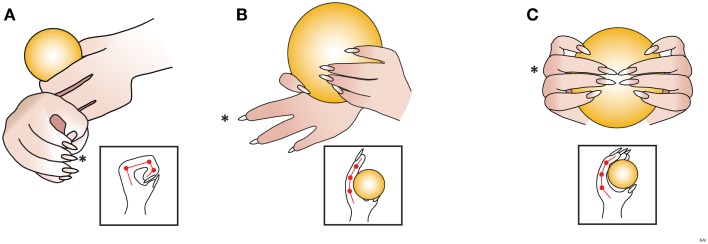Figure 6.
Amendment: predominant forepaw position. The rat is assessed for the most common position (more than 50% of the time) assumed by the digits. Scored as either (A) clubbed flexed fixed – the digits are flexed and held in a fist with joint angles of about 90°. (B) Extended, non-adaptable – One or more of the digits are partially extended with joint angles between 180° and 160°; in addition, these digits DO NOT CONFORM to the shape of the cereal. (C) Partially extended, adaptable – digits are partially extended with joint angles between 160° and 90°; in addition, these digits CONFORM to the shape of the cereal. Diagrams within the squares are observing the impaired forepaw, depicting digits 1 and 3 (*), from above. (Revisions of the IBB scale from the JoVE 2010 version are highlighted in italics.)

